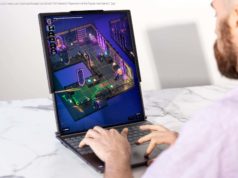Google still hasn’t explained what it’s up to with Fuchsia, but the project has continued to develop to the point…
Google launched Android to the public in 2008, and it has since grown to be the most popular operating system on the planet. Android is still growing and bringing Google services to more consumers than ever, but what comes after Android? Google isn’ t resting on its laurels — last year the first open source bits of a new Google OS called Fuchsia appeared online. Google still hasn’ t explained what it’s up to with Fuchsia, but the project has continued to develop to the point that it has a new and fascinating interface.
Fuchsia is not based on Linux, as Android is. Using the Linux kernel was a perfectly reasonable decision in the early days of Android, but it has held Android back over the years. Fuchsia is based on a new Google-developed microkernel called Magenta. It was designed from the ground up to support a variety of devices and form factors with modern hardware.
When Fuchsia first appeared on GitHub last year, there was very little to go on. Compiling the OS only offered up a command line with no user-facing features, but now it has a real (partially) working interface called “Armadillo.” Google opted to use its own Flutter SDK, which relies upon the Dart language. Apps written in Flutter are intended for high-performance scenarios with 120fps animations. Since Armadillo is based on the Flutter SDK, it’s possible to compile it as an Android APK and install it on a phone. That’s what ArsTechnica did, and it’s pretty weird.
Armadillo (which has a logo that was definitely drawn by an engineer and not an artist) takes a completely different approach to the home screen than what we see on Android today. It’s a vertical scrolling list of cards. In the middle is a profile card with location, battery, and other information. You can also tap on the profile image to bring up quick settings like airplane mode and Wi-Fi. Above the profile card are “story” cards, the closest analog of which would be Android’s recent apps screen. Stories can also be sets of apps or modules that “work together for the user to achieve a goal.” Below the profile card is a list of suggestions, which is reminiscent of Google Now.
The current build of Fuchsia includes some interesting window management features, too. The cards and stories can be dragged around the screen and expanded into various proportions including one quarter, a third, half, or three quarters of the screen. It’s cool to see how this could work, but none of the modules in Armadillo actually work right now. It’s also hugely unstable and bound to crash eventually.
Fuchsia is obviously still in the early stages, and it may never show up in a real product. However, Google has been adding to Fuchsia over the last few months. Maybe we’ ll hear more about it soon.






